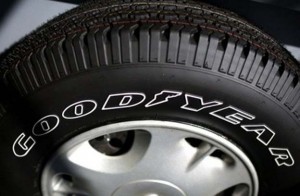Every new car must now be equipped with a basic sensing system able to detect when its tires are underinflated, but German supplier Continental wants to take things a step further with a new technology it claims can tell when a tire’s tread has worn out and needs to be changed.
While that might seem something motorists should be able to detect on their own, the simple reality is that drivers have a tendency to ignore those big, black doughnuts until something serious happens, whether a flat or a blow-out. But that can prove a dangerous mistake, tire problems routinely responsible for serious crashes and fatalities.
According to the U.S. Department of Transportation, tires are linked to about 11,000 crashes each year, accounting for around 200 fatalities. That’s led the National Highway Traffic Safety Administration to launch a new campaign to increase motorists’ awareness.
“This campaign will help consumers make more informed choices every step of the way when it comes to choosing and caring for their tires — keeping them safer and saving them money at the same time,” explained Transportation Secretary Anthony Foxx.
Automakers have done a lot to improve the safety of their vehicles in recent decades, adding a variety of active and passive safety features. Yet, it literally does all come down to where the rubber meets the road. Each tire has just a palm-sized contact patch with the pavement, and all sorts of things can impact how well those tires maintain their grip.
Improperly inflated tires can lose their traction more easily, and they can also affect how a vehicle handles, especially on rough, wet or icy pavement, and when driving fast or aggressively through turns. Underinflated tires, meanwhile, can cost a motorist as much as 10% of their fuel economy, according to various studies, and wear out more quickly.
Tire treads are designed to enhance grip, especially when roads are wet, snowy or icy. Worn treads can lose their grip and also may fail unexpectedly. Tires can also leak or even blow out if there is damage to the sidewalls or the rim.
(Study shows cost of owning, operating a car has dropped for a change. Click Here for more.)
The new NHTSA campaign aims to get motorists to routinely monitor their tires – checking tire pressure monthly, for example, while also looking for tread wear and damage.
It is also putting a focus on the need to purchase the right tires. Automakers often work with tire manufacturers to develop specific designs for a vehicle meant to enhance both safety and comfort, as well as fuel economy. Purchasing the wrong replacement tire might save a few dollars but it could create serious problems, quite literally, down the road.
(New online service aims to save motorists money on car repairs, improve service. Click Here to find out more about Openbay.)
The new government campaign also shows consumers how to read tire labels which can indicate a variety of details, including not only their size but the speed they are rated to handle.
Among the tips the “Tirewise” campaign offers, motorists are shown how and when to check tire pressures. Motorists often mistakenly stop to check only after they’ve been driving, but pressure is affected by temperature, so the longer and faster you’ve been driving, particularly on a hot day, the higher the readout you’ll get. Experts recommend checking tire pressure at the start of the day.
They also stress that motorists should not wait until a tire pressure warning light flashes on the dash. Those warning lights are designed to alert a driver of a pending emergency and should not be substituted for routine, monthly checks.
(Forgot where you parked? New study reveals our most embarrassing moments behind the wheel. Click Herefor the story.)
New tires, meanwhile, have built-in tread-depth indicators that show when they have reached the point where they are worn and must be replaced. But that can be a bit confusing, something Continental’s new system is intended to address. It can measure tread depth electronically and signal the driver when it’s time to replace a tire.
The good news, according to NHTSA, is that the number of tire-related crashes and fatalities has decreased during the past decade, but accidents are still far too routine. The Tirewise campaign offers a few simple steps that can assure a motorist doesn’t become part of the statistics.


Air pressure is important but with the horrendous pot hole strewn roads in much of the U.S. tires and suspension endure brutal, violent use. Then with people routinely driving into and over curbs, it’s a miracle there aren’t more tire failures.
The newer vehicles with tire pressure monitoring should improve tire pressure maintenance. Every Fall however when the temps drop and the tire pressure light comes on people ask if they need to check their tire pressures. For most drivers, vehicle maintenance is like rocket science – something they have no clue about.
I once did a survey in a car forum on how many people read the OM that comes with a new car. Less than 10% of people ever even opened the OM but they would ask questions day after day in the car forums – all that were answered in the OM.